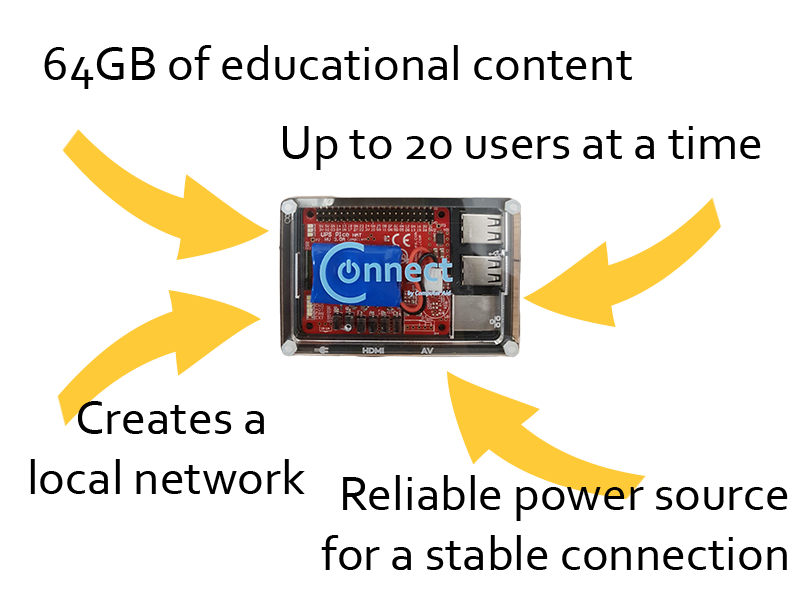It’s hard to imagine teaching without computers now, with the internet providing a wealth of educational resources and interactive learning. However, this is the reality for many students in developing countries. Often with unstable electricity and internet, the prospect of computer learning is only for the richer schools.

At Computer Aid International, we believe that everyone should have equal access to technology, no matter where they are in the world, so we created the Connect Device.
We’ve implemented the Connect Device in projects where there is either expensive internet access or no internet access at all. With the device, an ICT lab can have 20 computers connected to the local connection, giving access to interactive learning materials from World Possible, such as:
- Interactive maps
- Animated videos
- Wikipedia articles for Schools,
- Interactive simulations
- Digital textbooks and teaching resources
- Storybooks and Classic Literature
- Khan Academy tutorials
- MIT Scratch
We’ve seen firsthand how engaging and useful these programs can be, such as in the Harare region of Zimbabwe where we run our eClasses project. In St Giles Special School. The students and teachers were more motivated and engaged in learning, so much so that the Computer Society of Zimbabwe is now fundraising to ensure that the project can continue for another year!
The Raspberry Pi was an ideal solution for this device, not solely because of its affordable price. The slim and lightweight design makes it easy to ship to all areas of the globe and the flexibility in terms of use and build have allowed us to add essential elements such as a fail-safe power down in case of a loss of electric.
We are going to be sending out more devices than ever this year, in hopes to reach the global goal of quality education for everyone by 2020.
You can learn more about the Connect Device in this video:
